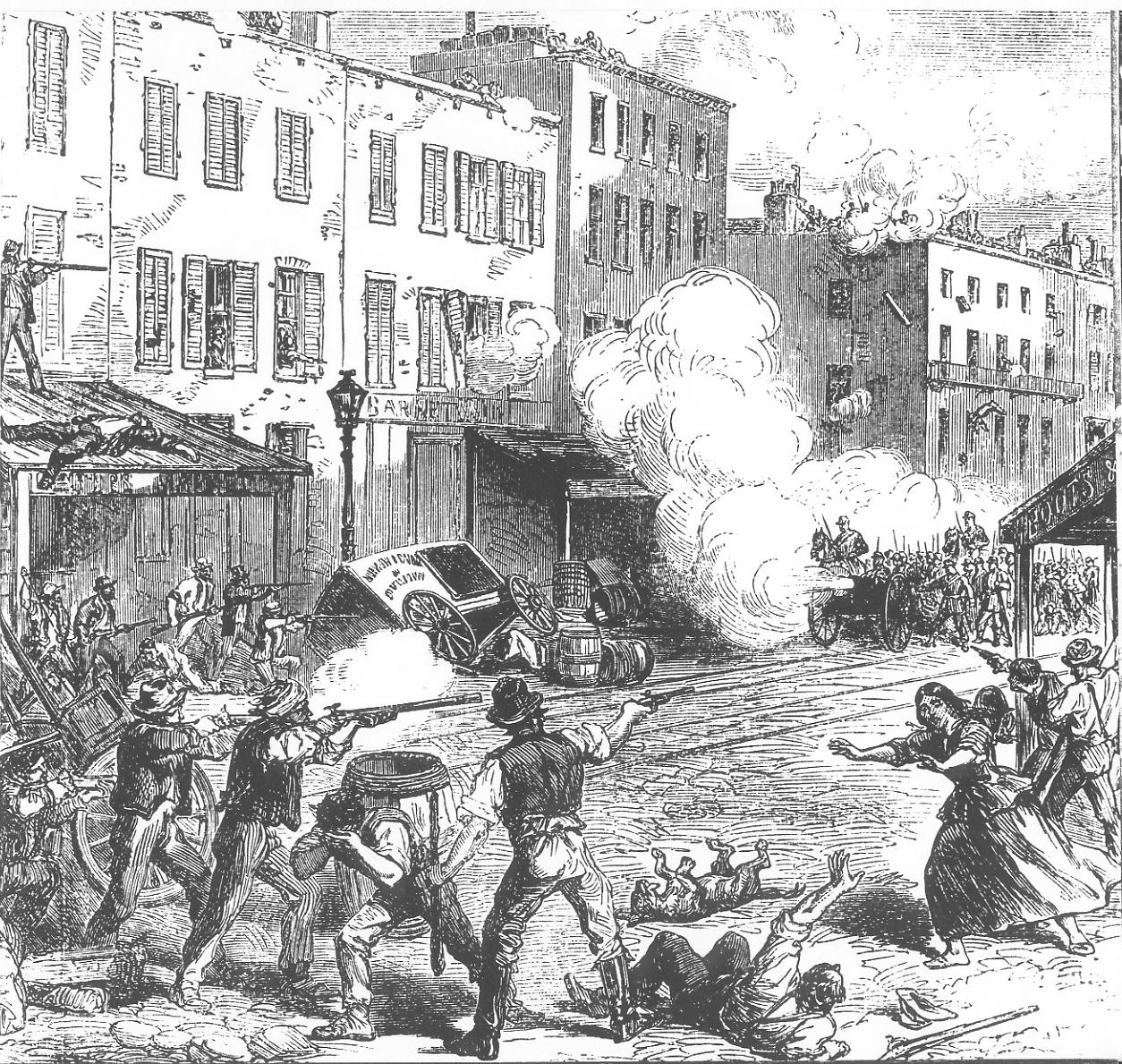 |
| © 2002-2013 The Lincoln Institute |
On the 13th the numbers were again called. An angry mob of around 500 people showed up at the Ninth District Provost Offices at Third Avenue and 47th Street in Manhattan. The draft was halted as the building was set on fire. Rioters stopped the fire fighters from putting the blaze out. Horses were killed and street cars were toppled. The city cut telegraph lines to keep the news from spreading that a large group of mostly white Irish New Yorkers were rioting against Emancipation.
The fear was that there would be no jobs for the white men.
Because of the war, there was no militia to be sent into the city. The mob turned against the black people of New York. The mob beat, tortured and/or killed numerous black people, including one man who was attacked by a crowd of 400 with clubs and paving stones, lynched and set on fire.
Particularly terrible was the destruction of the Colored Orphan Asylum at 44th and Fifth Ave. 233 children lived in the building when it was attacked by several thousand rioters. The place was stripped of food and supplies before being set on fire and burned to the ground. Amazingly each of the orphans escaped.
At least 100 black Americans were killed on the first day of rioting. Many black-owned businesses were burned.
The homes of politicians who supported the Emancipation were attacked.
By July 16th at least 120 people were killed. 11 black men were lynched. At least 2000 were injured. Property damage was $15 – $75 million (adjusted for inflation). 50 buildings burned to the ground and many more had to be demolished from the damage. Whole sections of the city were altered overnight.
As a result of the violence many blacks moved to Brooklyn,which was still a separate city, and New Jersey. Whites and blacks would be divided by boroughs for decades. This division can still be seen in parts of the city to this day.
The riots are considered the largest civil insurrection in American history. Ever.
What amazes me the most about this event, aside from it happening at all, is that I never knew about it. That something so important to the history of this country occurred and no one pointed it out in my many years of school.
That while a war that deeply divided our country was going on, our largest city was also deeply divided - to the point of killing 120 people - and we don't discuss it...
I can only look at is and say that this is part of our problem. Part of New York City's larger racial and political and class-based problems. Deeply hidden beneath daily lives, all over the country, are these hidden pasts.
I don't know if we can unearth and put to rest enough of them to actually heal. I don't know that the wounds heal themselves. But it's interesting that we don't acknowledge that the wounds are there.
You can read more about the riots at Mr. Lincoln & New York. A larger version of the map at the start of the post is here.

No comments:
Post a Comment